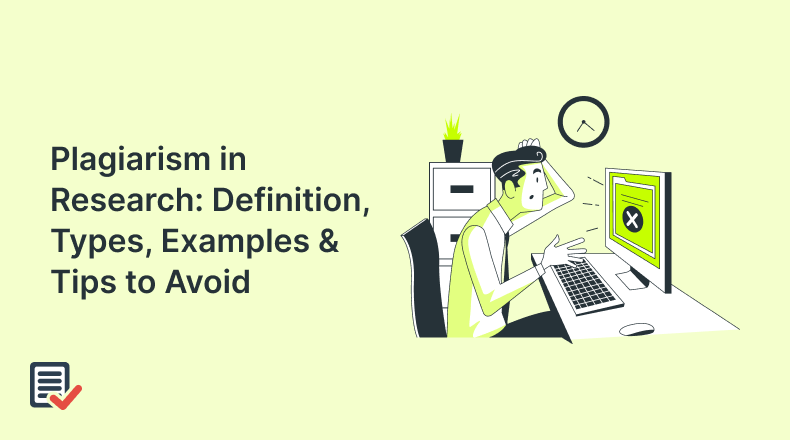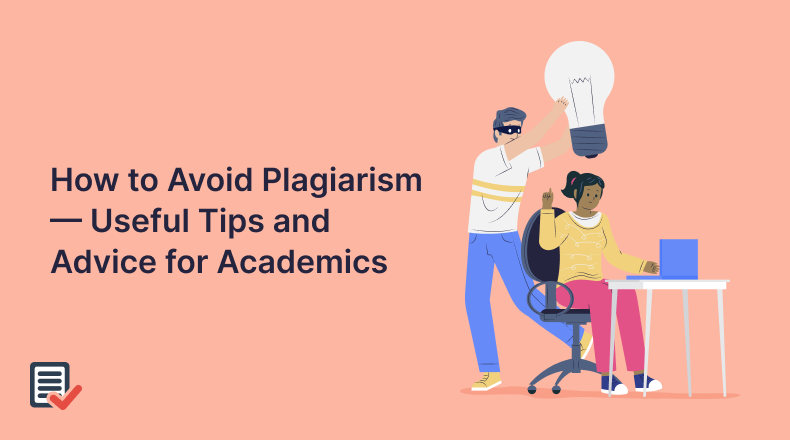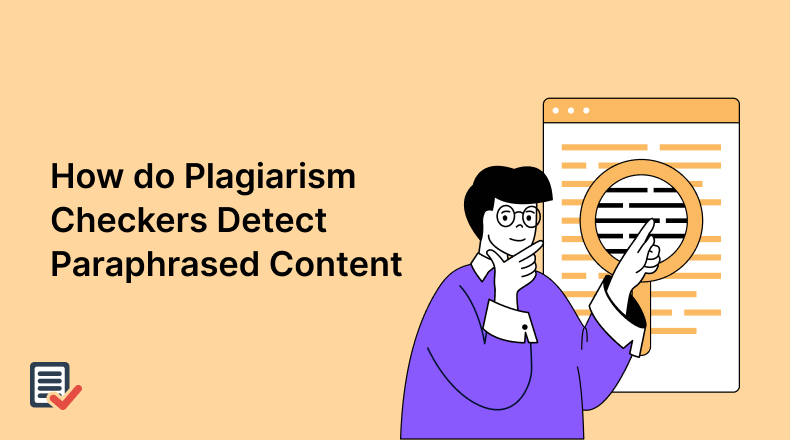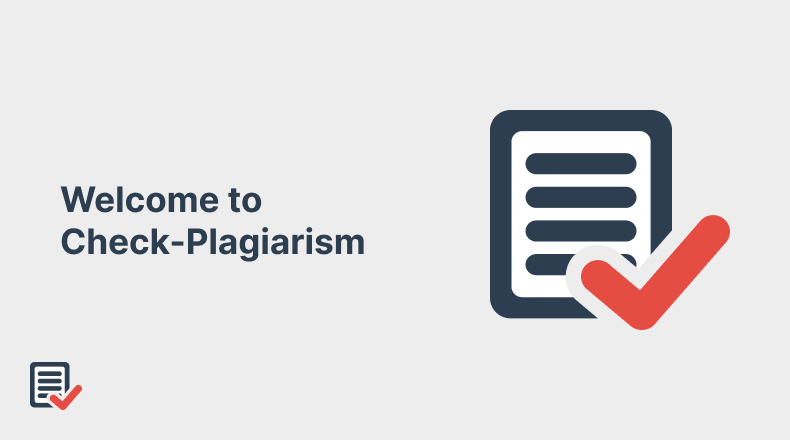
The word ‘plagiarism’ is derived from the Latin word ‘Plagiarius,’ meaning kidnapper. It is unethical to steal someone’s intellectual property, written with hard work. The fact that everything on the Internet is easily accessible allows more people to copy others’ work.
Duplicating is a major problem in scientific or research writing. One must learn about plagiarism to ensure fairness in research and maintain academic integrity.
In this blog, we will discuss what plagiarism is in research, its types, and its severe consequences. We will also list examples of plagiarism and how to deal with it. So, come along!
Plagiarism Definition
The University of Oxford defines plagiarism as “Presenting work or ideas from another source as your own, with or without consent of the original author, by incorporating it into your work without full acknowledgment.”
Plagiarism is the theft of ideas or intellectual property of other writers, researchers, or content creators. Duplication is a form of scientific misconduct involving the reuse of research findings, hypotheses, or initial investigations on a problem without proper attribution. In simple words, when someone uses someone else’s intellectual property as their own in any form, it is considered duplication.
Types of Plagiarism in Research
Plagiarism has multiple forms in academic writing and research work. It is challenging to distinguish what constitutes duplication and what constitutes an ethical way to incorporate others’ ideas. Simply put, plagiarism generally consists of the following types.
1. Global Plagiarism
When the researchers copy-paste the entire document from others’ work, they are conducting global plagiarism. In this type of duplication, large chunks or sections of content are plagiarized and represented as the work of others. Global plagiarism is evident and easily identifiable.
2. Verbatim Plagiarism
Direct plagiarism means adding a piece of content from a source without attributing the original author. It is completely fine to quote someone, add statistics, or provide evidence based on others’ research. However, this is considered stealing someone’s hard work without crediting the original author or publisher.
3. Source-Based Plagiarism
Failing to provide authentic sources related to the research topic is also direct plagiarism. This is the most common type of duplication in research. It is called source-based plagiarism, as a non-existent source is cited in the study. The plagiariser copies content from a source, and instead of adding the correct citation, they reference it to something that does not exist.
4. Mosaic Plagiarism
This is a sneaky form of plagiarism that is quite challenging to detect. In mosaic plagiarism, the plagiariser adds small chunks of text from various sources into one document. The whole content contains bits and pieces from multiple documents in an attempt to avoid detection. Mosaic plagiarism is not appreciated because no new insights are present. It is also called patchwork plagiarism.
5. Self-Plagiarism
In this type of duplication, researchers copy their research instead of stealing someone else’s work. This act is equally unappreciated in scientific research. It may include copying sections of previous studies and adding them to the current one without any credit. Submitting one research paper for two different projects or related topics is also included in self-plagiarism.
6. Unintentional Plagiarism
Unintentional duplication happens when the researcher has a similar idea to one that was previously published. People may have the same ideas, but the one who publishes them first is the original creator. The person writing the research paper may not be aware that they are committing plagiarism.
7. Paraphrasing Plagiarism
Like patchwork duplication, improper plagiarism is also a subtle form of paraphrasing. In paraphrasing plagiarism, the text is rephrased or rewritten close to the original source. The plagiariser copies the text, changes some wording or sentences, and submits it as their own research. The content is still detectable, as most of the work remains the same.
Examples
Plagiarism in research includes:
- Duplicating a large portion or the full research paper from peers and publishing it in your name.
- Copying and pasting text from a website, book, or article into your research without referencing or citing the source.
- Using someone else’s research paper as a template for your work and changing a few details to make it unique
- Poorly paraphrasing ideas from one or many resources into a single paper.
- Reiterating information from others in your own words but using a similar structure or vocabulary.
- Adding sentences from different sources to create a new piece of work without crediting the original source.
- Submitting the same paper for two different purposes.
- Using portions of previously published research in a new work without permission.
- Recycling parts of a thesis in a subsequent publication.
- Failing to accurately cite a source that you used for research.
- Mix and match your own ideas with someone else’s to give an illusion of original content.
- Using a quotation without proper attribution.
Consequences of Plagiarism in Research
A plagiarist usually includes academics, professors, students, and researchers. Any person caught copying others’ intellectual property in any form will have to face the implications. Severe consequences of plagiarism include the following.
• Damages Reputation
Plagiarism damages both personal and professional reputations in academics. Researchers accused of duplication lose their authority and credibility. It also leads to losing the trust of peers, mentors, and institutions. A plagiariser is always seen as a threat to the integrity and honesty of research work.
• Hefty Fines & Penalties
The consequences of duplication are not limited to reputational harm; they imply heavy fines. Most of the institutes have strict policies on plagiarism depending on its severity. In some cases, only institutional penalties like fines, suspension, or cancellation of contracts are applied. At the same time, other cases may lead to hefty fines or monetary compensation.
• Loss of Funding
Losing funding is the most common result of copying from other resources. Usually, organizations or institutes provide financing to the researcher to meet the expenses of the research process. Therefore, failing to maintain honesty will lead to the cancellation of research and loss of money or tenure.
• Legal Implications
Stealing copyrighted material is illegal and will cause criminal lawsuits against the plagiarist or the institution. Courts will impose copyright infringement and rulings to prevent further distribution of the plagiarized material. In severe cases, criminal charges are filed if the plagiarist makes false claims or engages in large-scale theft of intellectual property.
• Life-Long Repercussions
The consequences of copy-pasting others’ ideas into your documents are not just limited to a one-time punishment. The ramifications of plagiarism are for a lifetime. A person accused of duplication is also seen as a cheater. Even a one-time act of plagiarism can lead to the destruction of a career.
Tips to Avoid Plagiarism in Research Work
It is essential to prevent plagiarism at all costs to maintain the integrity of the research work. Therefore, we have created the following step-by-step guide to write unique and original content.
1. Understand Plagiarism
As discussed in a previous section, plagiarism is not just copying someone else’s words. It has many types, like using someone’s ideas, research, or data without proper acknowledgment. Therefore, understanding the different forms of plagiarism can help you to avoid it.
2. Add Quotations
If you want to add text directly from an article, enclose it in quotation marks along with an acknowledgment. Researchers should always use direct quotations cautiously and must attribute them to the original author. Do not overuse quotations because they lead to plagiarism. Instead, consider paraphrasing the ideas.
3. Add Proper Citations
Statistics, research findings, and facts from other sources are added to a research paper. Moreover, text from other authors is directly added to prove a point or show the credibility of your research. So, add citations vigilantly to ensure that the creator is attributed accurately.
4. Paraphrasing Effectively
Paraphrasing is an effective technique to avoid plagiarism when you cannot add quotations but still want to use the ideas. In this scenario, thoroughly read and describe the text in your own words. In this way, you will be writing the content in your style using your understanding. Lastly, add a reference to the original source.
5. Conduct a Plagiarism Test
The best way to avoid all types of plagiarism is to conduct a plagiarism test. For this purpose, you need an efficient plagiarism detector like Check-plagiarism.com. This powerful tool matches your content against all the content available on the web and identifies similarities. The tool will help you save time and identify potential plagiarism before publishing research papers. It can detect all types of duplication effectively and accurately.
6. Review and Revise Repeatedly
After finalizing the draft, take proper time to review your work carefully. Read your content from start to finish more than once. Next, verify that all sources are properly cited and included in the bibliography. Through this process, you will catch any potential issues before submission.
To Sum Up:
Plagiarism is an offense in academic and research writing. It is wrong ethically and professionally. Stealing ideas, written work, or research results of someone else and presenting them as your own is not suitable. That is why duplication is not appreciated in any form, and severe punishments are imposed on the plagiarist.
It is essential to learn the prevention techniques to steer clear of this offense. The best way to do this is to check for plagiarism before finalizing the document. If the similarity score is high in the duplication test, paraphrase the content and cite the sources that were missed.







